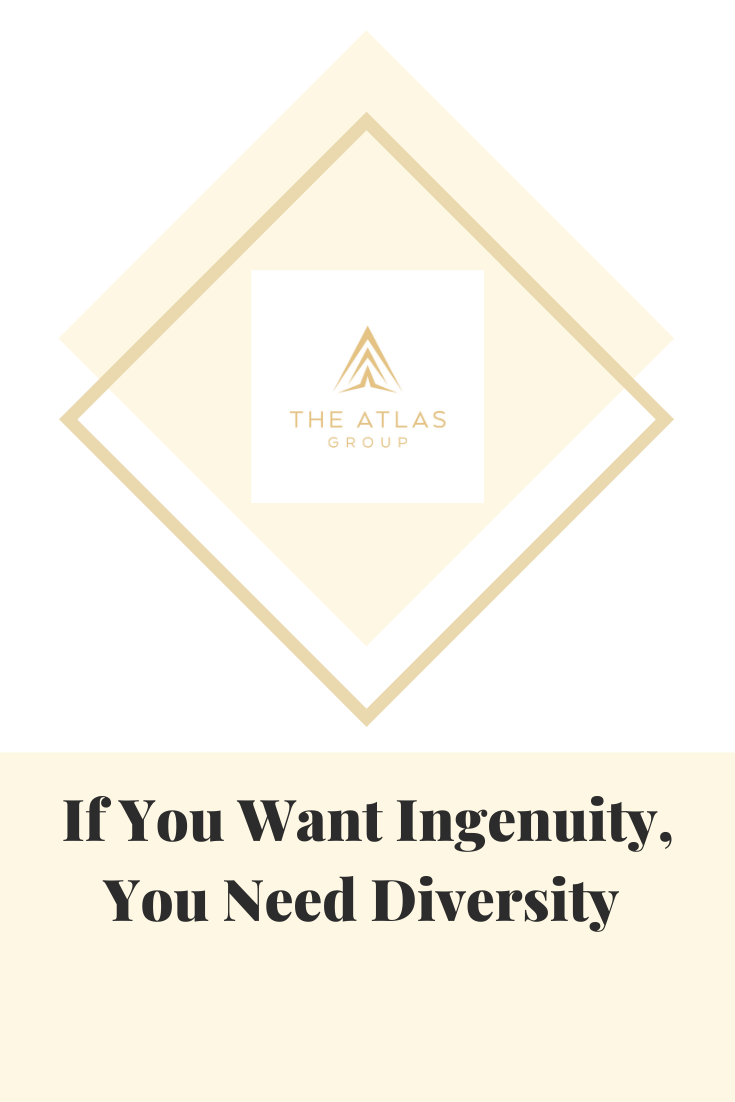Diversity spawns creativity, so if you want ingenuity, you need diversity:
“You are actually at a disadvantage if you are surrounded by people of your own group… regardless of what that group is.”
Diversity is a necessity. Not just for the humanity of it, although that’s enough of a reason on its own, but because our own work suffers when we are surrounded by sameness.
In a podcast originally aired in 2018 on NPR, host Shankar Vedantam summarized the findings of Harvard economics professor Richard Freeman in the quote above. Freeman looked at the ways groups of scientists worked together, and his study found that academic papers authored by a team with more varied backgrounds received more acclaim or “prestige” than those with more homogeneous groupings.
Creativity follows diversity because of the meeting of worlds that occurs between individuals with different backgrounds. This effect, referred to as the “edge effect” in ecology, is seen repeatedly across disciplines in science, music, the arts, and, of course, technology.
When dissimilar environments meet, the differences between them spawns the growth of new life. In the workplace, creativity flourishes and we are inspired to solve problems in novel ways, drawing on everyone’s own unique talents and experiences.
So not only should you seek out diverse talent because it’s good for your bottom line, but because it will genuinely make your company a better place to work.
Diversity doesn’t just mean race and gender, although that’s usually what comes to mind first. Diversity also includes nationality, ethnic group, familial structure, religion, discipline, socioeconomic status, LGBTQIA identity, neurodivergence, disability, age, familial lineage/history… you get the picture: we can be different from one another in endless ways, which is why it is so important to focus on creating inclusive environments that are open to people unlike yourself- to advocate for the presently underrepresented, and becoming aware of intersectionality and the role that it plays in your field.
What messages are you sending?
As you’re getting informed, do a self-assessment. Think about your current work environment, virtual or otherwise, as if you’re experiencing it for the first time. Monitor your language and the quips you may make, double-check your email signature or “about me” sections. Be honest with yourself about stereotypes and biases you have, when they come up, and how you can manage them.
If you’re a hiring manager, Think about the language you use in the job post itself; using words like “hacker”, “ninja”, or “rockstar” that could alienate at least half your pool in just the first line. During the interview process, do you require applicants to jump through unnecessary hurdles that would put certain populations at a severe automatic disadvantage? For example, are you requiring candidates to have a degree? Once they’re in the door, how do you make sure new employees feel welcome, regardless of background?
There’s no point in doing the work to recruit diverse talent just to edge them out through alienation and carelessness.Think about providing continuing education in the form of regular training or workshops. Be active in your allyship and advocacy. Checking a box for compliance or meeting minimum quotas isn’t sufficient; you need to curate a welcoming environment of belonging through conscious, sustained effort. Diversity does not stand alone; belonging & inclusiveness must be right there with it.





